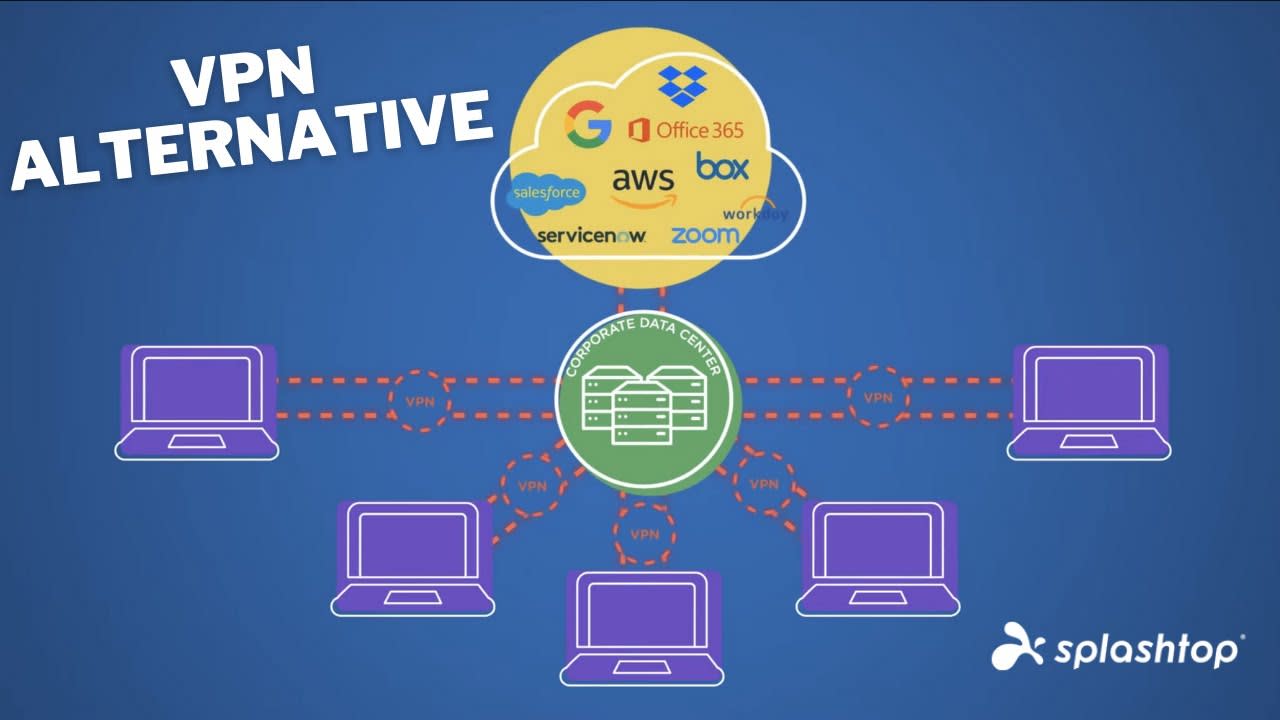Due to the COVID-19 outbreak, a lot of companies have had to virtualize almost overnight, with their employees starting to work from home. Companies have mobilized their business continuity plans, disaster recovery plans or pandemic policies and are hurrying to build the infrastructure to support the work-from-home initiative.
A big part of this infrastructure is VPN that companies have been historically using for remote connectivity to office network and computers. Companies who use this legacy solution know all too well the issues that come with it. Read further to learn what these issues are and how a remote access software can help you overcome them.
VPN – the legacy solution and its problems

Using VPN has been the legacy way for companies to remote into the office network and access work computers. Now, as companies are frantically trying to virtualize and enable work from home for all employees, the issues with VPN are magnified and are hindering business as usual.
1: In this BYOD world, employees are forced to use office computers
The way VPN is set-up, a connection from a compromised device could infect the entire network of office computers and assets. That’s why employers insist on connecting through company-issued devices and need to ensure all devices are protected against malware to minimize risk exposure. This is hard to execute and maintain since an increasing number of employees prefer to use personal devices for work (Bring Your Own Device).
2: When several employees are connected, performance deteriorates
If there’s a high load on the VPN gateway, i.e. many employees connected via VPN simultaneously, the performance deteriorates and creates a lag. Companies then have to look for alternate ways to offload VPN for employees to be able to work without disruption.
3: It’s a security risk
Even though companies mandate the use of company-issued and protected devices, they cannot ensure that a compromised device is not accessing their network. If that happens, a compromised device can infect the whole company network and assets on it.
4: Not easy to set-up and use
In cases like these when there’s an unusual surge of employees working from home and connecting through VPN, companies need to deploy infrastructure on the go to accommodate the increased number of connections. That means buying, configuring and setting up additional VPN gateways. That turns tedious and expensive very fast.
Additionally, for employees to use VPN is not easy either. It involves multiple steps and remembering multiple logins for different apps. Combine that with poor connection rates, high latency, and slow performance, you have unhappy and unproductive employees.
5: Not suited for longer-term work from home
VPN might be efficient for employees to quickly connect to the office computer and complete a task. But it might not work as well as a long-term work from home solution, as is the need of this hour. When employees work from home entirely, they remain connected to VPN all the time, even when they do personal tasks. That overloads the VPN even more, and it’s not efficient use of company bandwidth.
6: Require an additional app for remote control
While using VPN to access office network, employees need to connect to another app like RDP to remotely access their computers. This makes it complex for the company to maintain as well as for the employee to connect.
Splashtop – a superior VPN alternative
As mentioned above, VPN is a legacy solution for remotely connecting to the office network, and is not able to address technology trends and remote access needs of employees today. Sophisticated remote access tools like Splashtop serve the need much better. Why so?
Splashtop enables users to access work computers through any personal Windows or Mac computers or even iOS or Android mobile devices. It
supports the growing trend of BYOD.
Splashtop uses fast, high-performance technology that lets you access the remote computers as if you are sitting in front of it, without a lag or connectivity issues.
With TLS 1.2 with AES 256-bit encryption, device authentication, two-factor authentication, multi-level password security and many more security features, Splashtop provides a secure remote connection. Moreover, employees access their office computers without accessing the entire network, and thereby eliminates risk exposure to other office assets.
Unlike VPN, it’s easy to scale up for a sudden increase in employees working from home. It is easy to mass deploy Splashtop agents on the work computers, and then employees can access them through the Splashtop app from any device, through one click. Additionally, through integration with Active Directory or Single Sign-On, employees can connect through one password. It is
very easy to set-up and use and is much more cost-effective.
Splashtop is a great solution for long-term work from home situations just as well as ad-hoc remoting needs. Employees can maintain a remote connection to their work computer as well as do their personal work with their personal device, without loading the corporate network bandwidth as is while connected through VPN.
You can not only completely control your remote desktop computer with Splashtop but you also get additional features like session-recording, remote print, share desktop, maintain an audit trail and so on.
Begin a free trial of Splashtop today, and see why it is the best VPN alternative for yourself.

